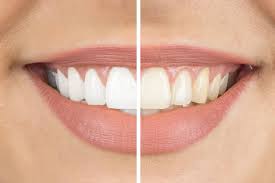Having sensitive teeth doesn’t mean you have to give up on a brighter smile. Many teeth whitening treatments are gentle enough to minimize discomfort while still delivering desired results. Understanding your options, from professional to at-home treatments, helps you make the right choice. Knowing what to expect can guide you toward the best approach for your dental care.
Understanding Tooth Sensitivity
Tooth sensitivity occurs when the protective enamel on your teeth becomes thin or when gums recede, exposing the underlying dentin layer. This makes your teeth more reactive to temperature changes, certain foods, and chemical treatments. Teeth whitening products typically contain hydrogen peroxide or carbamide peroxide, which can temporarily increase sensitivity to light. Modern whitening techniques now use gentler formulations and application methods to reduce this risk.
Choosing Professional Teeth Whitening
Professional in-office whitening is a great option for people with sensitive teeth. These treatments are closely monitored by dental experts who can adjust the process for comfort and optimal results. Dentists often use desensitizing agents before, during, or after the procedure to minimize discomfort.
The controlled environment of a dental office allows for precise application of whitening agents, reducing irritation to your gums. Dentists use protective barriers to focus the gel only on your teeth. This reduces sensitivity while enhancing the treatment’s results.
Most in-office whitening sessions last 60 to 90 minutes and deliver noticeable results in a single visit. If sensitivity arises during the treatment, your dentist can pause or apply a desensitizing gel for relief. This tailored approach makes professional whitening a safe and efficient choice for those with sensitive teeth.
Considering Take-Home Kits
Take-home whitening kits prescribed by dentists are a gentler option for those with sensitive teeth. These kits use lower concentrations of whitening agents, making them less harsh on enamel. They often include custom-fitted trays to provide even gel application while reducing gum irritation.
These systems require daily use, typically 30 minutes to several hours, over one to two weeks. The gradual whitening process helps minimize sensitivity compared to in-office treatments. While it takes more time to see results, the slower approach works well for those prone to discomfort.
Take-home kits also offer flexibility, allowing you to control when and how often you use them. If you experience sensitivity, you can pause treatment or reduce the application time. This adaptability makes it easier to customize the process for individual needs. With careful use, these kits provide effective results without unnecessary discomfort.
Reducing Whitening Sensitivity
Regardless of the whitening method you choose, there are ways to manage sensitivity. Start by using toothpaste for sensitive teeth a few weeks before treatment to strengthen your teeth and reduce discomfort. After whitening, avoid very hot or cold foods and drinks, as your teeth may be more sensitive. Stick to room-temperature options until your teeth have fully recovered. If sensitivity becomes an issue, try spacing out your whitening sessions to allow for more gradual results. Taking breaks allows your teeth to heal while keeping you on track toward your whitening goals.
Achieving Your Brightest Smile
Both in-office and take-home whitening are available options for those with sensitive teeth. The best choice depends on your sensitivity, timeline, and preferences. Consulting a dental professional helps you select a safe and effective treatment that is tailored to your specific needs. With expert guidance, you can achieve a brighter smile comfortably.


Leave a Reply